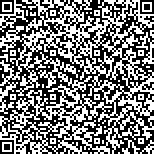| 引用本文: | 王涛,陈峻.基于时间效益的城市公交专用道设置流量条件[J].哈尔滨工业大学学报,2014,46(4):115.DOI:10.11918/j.issn.0367-6234.2014.04.020 |
| WANG Tao,CHEN Jun.Traffic volume conditions of setting bus lane on urban roadway based on time utility[J].Journal of Harbin Institute of Technology,2014,46(4):115.DOI:10.11918/j.issn.0367-6234.2014.04.020 |
|
| 摘要: |
| 为了精确分析公交专用道设置临界条件,在基本路段车速模型适用性分析的基础上,引入公交车流量、社会机动车流量、公交车比例等参数,分别建立了改进的混行机动车运行速度模型和设置公交专用道后机动车运行速度模型,并选取单向三车道路段进行实验调查,用采集的数据对改进模型进行标定.运用改进的模型,对公交专用道设置前后车辆运行速度差异性的分析可以发现,随着路段车流量(饱和度)的变化,车辆速度差异的变化呈现无差异、差异变大两个显著的阶段.进而从总出行时间的最小的角度,建立时间效率模型,用于计算设置公交专用道的临界条件.试算结果表明在公交比例较小时公交专用道设置的临界条件低于传统标准,公交比例较大时公交专用道设置的临界条件高于传统标准,公交比例变量的引入有助于细化公交专用道设置的临界条件. |
| 关键词: 公交比例 速度模型 公交专用道 时间效益 流量条件 |
| DOI:10.11918/j.issn.0367-6234.2014.04.020 |
| 分类号:U491 |
| 基金项目:国家自然科学基金重点项目(51238008);国家自然科学基金资助项目(51268006);桂林电子科技大学广西信息科学实验中心资助项目(20130320). |
|
| Traffic volume conditions of setting bus lane on urban roadway based on time utility |
|
WANG Tao1,2, CHEN Jun1
|
|
(1.School of Transportation, Southeast University, 210096 Nanjing, China; 2.School of Architecture and Transportation, Guilin University of Electronic Technology, 541004 Guilin, Guangxi,China)
|
| Abstract: |
| To analyze the condition of setting bus lane more accurately, a basic road speed model was introduced with its applicability. The model’s formulation of vehicle and bus was modified by considering different traffic parameters as vehicle volume, bus volume and ratio of bus. To calibrate road speed models respectively, the empirical data from two three-lanes one-way road section with and without bus lane was collected. Comparing the regulation of different speed between the traffic flow with and without bus lane, shows that the speed varied for two distinct intervals of no difference and the difference increased with the change of road traffic volume (saturation). Furthermore, the time utility models were set up to describe the traffic volume condition of setting bus lane. The conclusion shows that the traffic volume condition is lower than traditional standard when the proportion of bus is low and vice versa. The proportion of traffic in the composition of public transportation would help refine the different discrimination of setting bus lane. |
| Key words: ratio of bus speed model bus lane time utility volume conditions |







